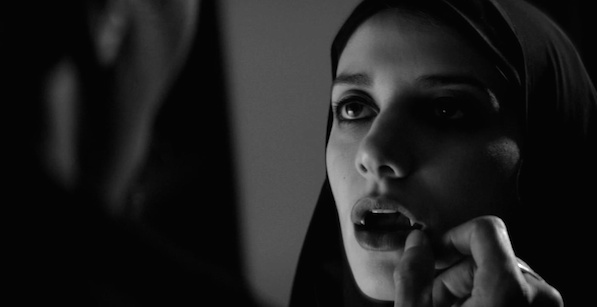
A Girl Walks Home Alone at Night rests on a bridge. It lies between the U.S. and Iran, and between horror movies and art cinema. Shot in California and spoken entirely in Farsi, it takes place in the Iranian town of Bad City. It never could’ve been actually made under the present-day Iranian government, as the characters include prostitutes, junkies and pimps, and the anti-heroine (Sheila Vand, who played the only sympathetic Iranian character in Argo) is a vampire. The atmosphere is slow and syrupy, evoking a Sergio Leone take on Kathryn Bigelow’s Near Dark. It suggests that some things are common to decrepit towns in both the U.S. and Iran, one of them being the liberating power of music and love. Lush black-and-white cinematography adds to the eerie texture. Shortly before the film opened, I talked to director Ana Lily Amirpour and, briefly, Vand.
Steven Erickson: Was it always your intention to shoot the film in Farsi, and did that ever cause tension with your producers?
Ana Lily Amirpour: Yes, it was my intention. I had really cool producers who were right onboard from the beginning. It was too weird a film to argue with: It’s a black-and-white Iranian vampire fairy tale.
Erickson: It began as a short, right?
Amirpour: It did, but I didn’t intend to make a feature from it. I just made the short, but I couldn’t stop thinking about the character. I just loved her. When I made the short, Sheila was supposed to play the vampire, but she got called to do a play out in New York, so I directed it with another actress. I wanted to give it another round with her in the role.

Erickson: For me, your film doesn’t feel like it takes place either in California or the Middle East, but some kind of imaginary space between the two. Was that what you were aiming for?
Amirpour: Totally! You just described it. I knew it was going to be shot in that part of California. I wrote the script around Taft, a small ghost town in the desert. I didn’t try to find places that fit. Once I found the town, I let the town become a part of the film. Taft is an empty oil town near Bakersfield.
Erickson: Your soundtrack is very eclectic. How did you go about selecting it?
Amirpour: Well, I listened to lots and lots of music. When I was writing it, I was thinking ‘What would be a really cool modern Iranian sound?’ I thought of Radio Tehran and Kiosk, which I already knew. I also thought of Ennio Morricone’s music for the Westerns of Sergio Leone. Then I met Collin Hegna [of Federale] and his music is like that. Sometimes the characters lead towards certain music, and that music leads you towards other music. Music can be like a fungus popping up.
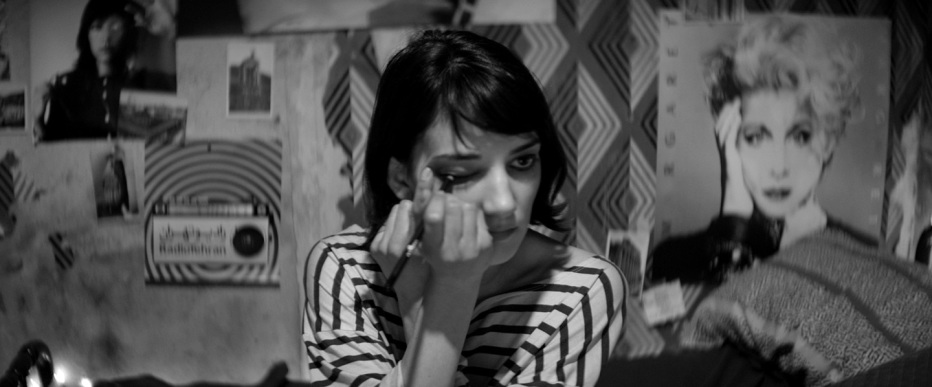
Erickson: But no Googoosh [a popular Iranian pop singer who began recording in the pre-revolutionary seventies]?
Amirpour: No, but we were listening to a lot of her at the beginning, and pre-revolutionary psychedelic rock from Iran. At some point, I decided I’m not going to go to the 1970s. The film is very modern. I wanted the music to be all new and emblematic of everything that’s going on in the film. There’s only one vintage Iranian song in the film, and it fits the gambler and junkie. It’s his generation. Diaspora is the key word. Radio Tehran moved to the UK eight years ago and Kiosk left eight or ten years ago. They’re both outside of Iran. I wanted all the music to be like that, like how we are.
Erickson: Westerners tend to see the chador as a symbol of female repression, but here on the vampire, it becomes quite sinister, almost like Dracula’s cape. Were you trying to suggest that it doesn’t necessarily have to be a burden on women?
Amirpour: Not so much anything about women’s burdens or religion. It’s more of a Clark Kent thing. In my experience in life, what you see is never what you get. Behind a few layers that you peel back, people are full of surprises. I’m not saying something about women’s roles in that way. It’s that you have to ask questions if you want to know the deeper truth about someone.
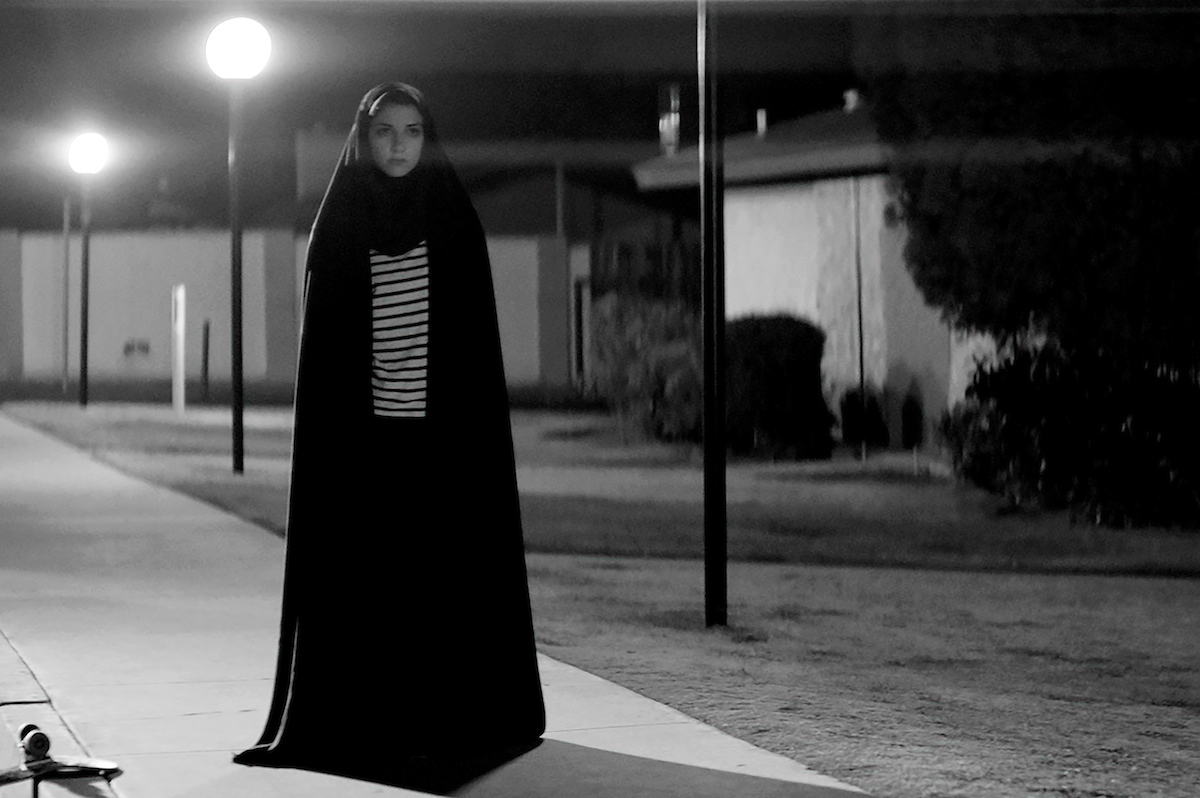
Erickson: Were you born in Iran?
Amirpour: I was born in England. My parents left Iran. I used to speak like this [adopts twee British accent]. But I lost the accent when I came to America.
Erickson: Was it difficult to cast the film with Iranian American actors who are proficient in Farsi?
Amirpour: Well, I didn’t cast. I wrote the film for those specific people. I talked to Sheila before I even wrote the script. I knew she was going to be the vampire. The script is a product of the people in it, meaning when I was writing, I was writing for people I knew. She’s very much a Clint Eastwood kind of character, like the Man with No Name. She’s the Girl with No Name. She does have a name, but only we know it.
Erickson: Sheila, was this your first role spoken only in Farsi?
Sheila Vand: In Argo, I also spoke entirely in Farsi. I like acting in Farsi. It’s like another layer of a costume. Both of the short films I did with Lily were in Farsi too. It just transforms you right away to speak it.
Erickson: Is there an indigenous vampire mythology in Iran, or did it come to you via Bram Stoker and films like Nosferatu?
Amirpour: I didn’t know of any. My vampire story comes from all the stuff we were looking at, including Nosferatu. Both the original and the Herzog version. I looked up Iranian vampires and didn’t find anything. Recently, someone approached me on Facebook and said there’s a film from 1960s Iran with a female vampire in it. I haven’t seen it, so I don’t know. My vampire ideas are a mix of Nosferatu, Coppola’s Dracula, The Lost Boys, Once Bitten, Anne Rice’s books, Near Dark. Vampires are so ripe with potential, with so many ways to go. I loved 30 Days of Night.
Erickson: Did you ever wonder if the film’s relatively slow pace would turn off genre fans?
Amirpour: It definitely will turn off genre fans. Every time I go to a genre screening or festival, I’m terrified. Because they’re going to think it’s a boring arty emo hipster vampire film. There’s a set expectation of violent horror films. Viscerally, they think they know what’s going to happen. It’s like watching porn. They expect you to be efficient with it.

Vand: It’s a love story, not porn!
Amirpour: I’m nervous about that, but I’ve also been pleasantly surprised.
Erickson: Your use of black-and-white cinematography is really striking. Was it hard to get exactly the right amount of black in the frame and still have the image be legible?
Amirpour: There’s a thing that happens when you shoot with the camera we used with anamorphic lenses. You lose two stops of light. The black softens and becomes textured in a really beautiful way. We knew about it and played with it in camera tests. I loved the look of the blacks in the film, in particular. They’re very painterly. It’s a huge part of the movie, visually. It felt like painting with a camera.
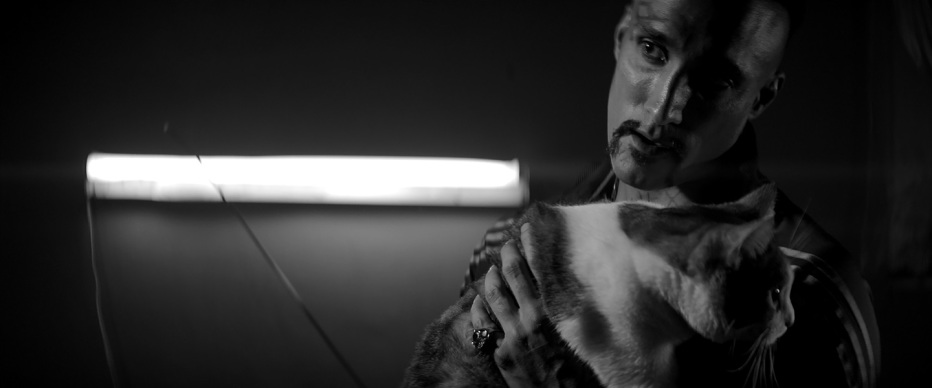
Erickson: Is the cat yours? He’s quite a memorable performer.
Amirpour: Mazuka? He’s a special cat. We were just joking this morning that he’s more like a dog than a cat. He could unzip himself and a dog could come out. [Makes panting noises.] What cat could you find that would let you walk him all over town? In that opening scene, we carry him all around Taft. There’s that one long shot where he walks around four blocks. Mazuka prefers to be out and around new places, whereas most cats prefer the familiar. He wants to know what’s going on in the world. He’s wonderful.
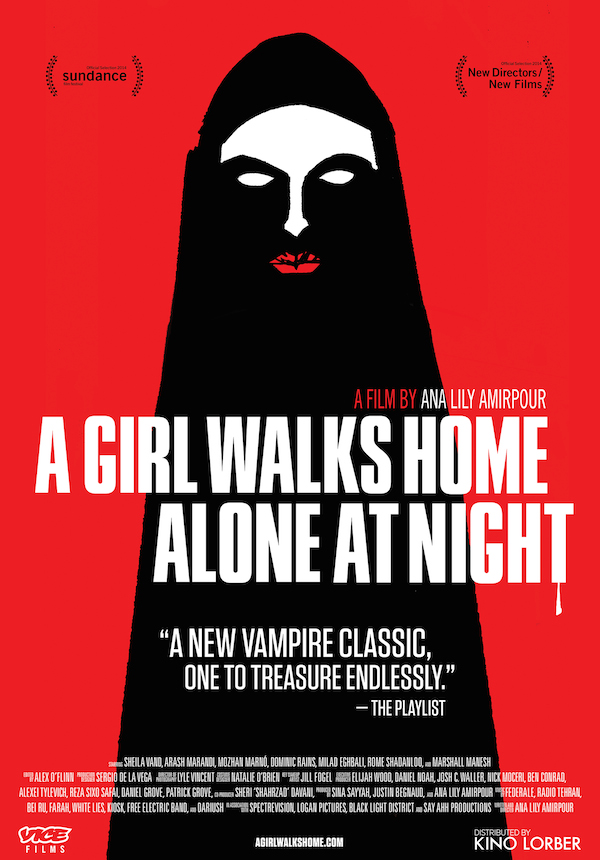
Erickson: At this point, there are quite a few films made outside Iran, but set in the country. Do you feel any sense of community or kinship with their directors?
Amirpour: No. I feel a kinship with people that like dancing and Back To the Future and David Lynch and stuff like that. I don’t ever think in those terms. I don’t know who I’m going to find a kinship with. One of the joys in life is that you don’t know who you’re going to meet around the next corner or where they’ll be from. One of the cool things about filmmaking is that you get to meet new people all the time. You never know what they’ll be like.



